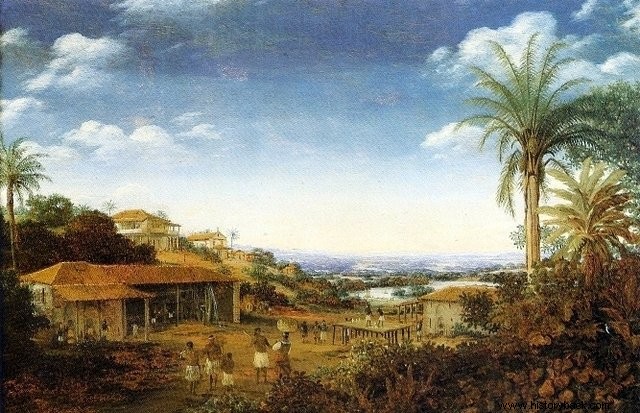Thesugarcane cycle denominates the period when sugar was the main export product of Brazil.
It began with the establishment of the Portuguese settler on the Brazilian coast, in 1530, when hereditary captaincies were created as a form of political and territorial organization.
The Brazilian sugar company was, during the 16th and 18th centuries, one of the largest agricultural economic activities in the western world.
Abstract
The cultivation of sugarcane was carried out in the Zona da Mata area, which extends along a coastal strip, from Rio Grande do Norte to the Recôncavo Baiano.
For the planting, harvesting and transformation of sugarcane juice into sugar grains, black and indigenous slave labor was used, in addition to free workers.

With the growth of sugar production, notably in Pernambuco and Bahia, the northeast became the dynamic center of social, political and economic life.
Portugal already had experience in the cultivation of cane, production and trade of sugar. Around 1440, the Portuguese colonies of Azores and Madeira supplied not only the metropolis, but also England, the ports of Flanders and some cities in Italy.
In 1530, the first sugarcane seedlings were brought from Madeira Island, in the colonizing expedition of Martim Afonso de Sousa. Two years later, Martim Afonso founded the village of São Vicente, in the current state of São Paulo, where he installed the first mill, the "Engenho do Governador".
Sugar production in Brazil reached its peak during the first three decades of the 17th century.
See also :Brazil Colony
End of the sugarcane cycle
The main cause of the end of the sugarcane cycle was the competition from the mills implanted in the Dutch and English Antilles.
In 1580, Portugal came under the control of Spain, which was at war with the Netherlands. As a reprisal, they began to invade regions occupied in the Americas by the Spanish and chose to do so in Pernambuco, because of sugar.
In 1640, when Portugal was freed from Spanish rule and focused on recovering the territories invaded by the Dutch, which would occur in 1654. However, sugar production had been greatly damaged by the fighting and declined in the following decades.
Thus, when the Portuguese recovered the region, Brazil was no longer important in the world sugar market. Sugarcane production in other European colonies, mainly in the Antilles, had surpassed Brazil's.
Despite efforts, the settlers were unable to resume the same pace of production. With that, the sugarcane cycle ended, but not the production of this food, which still exists in the country.
With the discovery of gold in the region of Minas, in the century. XVIII, the Gold Cycle would be the new economic phase in Brazil.
Engenho:sugar production unit
The mill was the place where sugar was manufactured and there were the mill, the furnace and the purge house. Over time, every large sugar-producing property came to be called an "engine".
Also part of this complex was the big house, the chapel, the slave quarters, the sugar factory, the cane fields and the houses of some free workers, such as the overseer, the sugar master, some hired farmers and artisans.
The planter lived in the big house with his aggregates and relatives, exercising great authority over them. Blacks exploited as slave labor inhabited the slave quarters.
The chapels gave the mill a social life of its own and some of them had up to 4000 inhabitants.
See also :Sugar Mill in Colonial Brazil
We have more texts for you :
- Brazilian Business Cycles
- Pau-Brasil Cycle
- Cotton Cycle in Brazil
- Coffee Cycle
- Hereditary Captaincies
